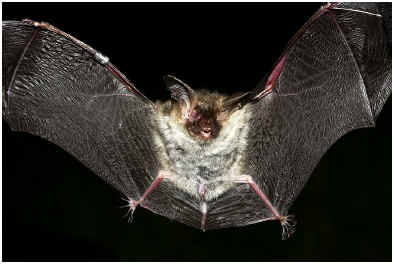
Do Bats Have Tails?
Most species of bats have tails. The anatomy of a bat’s tail is almost as diverse as the nearly 1,000 different species of bats. In some species, such as the free-tailed bat, the tail is very visible, extending far beyond the uropatagium, which is the membrane that connects the thighs of a bat and is used for flight, maneuvering, and sweeping prey up toward the wing and into the mouth. In others, the tail is encased within the uropatagium. Some bats, such as the bumblebee bat, the world’s smallest mammal, lack tails.
Bats with the Longest Tails
When thinking of a bat with a tail, the free-tailed bat species are the first to come to mind. Free-tailed bats have obvious tails extending far beyond the uropatagium, similar to a mouse. The tail is covered with a cartilage-like substance that protracts and retracts that the bat seems to use for maneuvering during flight, making it one of the fastest bat species.
Bats with No Tails
The Bumblebee bat is the smallest of the bat species and is the smallest mammal on earth as well, weighing less than a penny. These bats do not have a tail to assist them with maneuvering during the flight but instead have the ability to hover.
Resources
- “ADW: Bat Wings and Tails.” Animal Diversity Web. N.p., n.d. Web. 17 Oct. 2011. http://animaldiversity.ummz.umich.edu/site/topics/mammal_anatomy/bat_wings.html
- “Amazing Bats of Bracken Caves — National Geographic Kids.” Kids’ Games, Animals, Photos, Stories, and More — National Geographic Kids. N.p., n.d. Web. 17 Oct. 2011. <http://kids.nationalgeographic.com/kids/stories/animalsnature/bat-cave/>.





